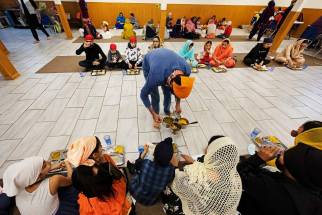Sharing is caring Langar community meal provides nourishment for body and soul
Read this article for free:
or
Already have an account? Log in here »
To continue reading, please subscribe:
Monthly Digital Subscription
$0 for the first 4 weeks*
- Enjoy unlimited reading on winnipegfreepress.com
- Read the E-Edition, our digital replica newspaper
- Access News Break, our award-winning app
- Play interactive puzzles
*No charge for 4 weeks then price increases to the regular rate of $19.00 plus GST every four weeks. Offer available to new and qualified returning subscribers only. Cancel any time.
Monthly Digital Subscription
$4.75/week*
- Enjoy unlimited reading on winnipegfreepress.com
- Read the E-Edition, our digital replica newspaper
- Access News Break, our award-winning app
- Play interactive puzzles
*Billed as $19 plus GST every four weeks. Cancel any time.
To continue reading, please subscribe:
Add Free Press access to your Brandon Sun subscription for only an additional
$1 for the first 4 weeks*
*Your next subscription payment will increase by $1.00 and you will be charged $16.99 plus GST for four weeks. After four weeks, your payment will increase to $23.99 plus GST every four weeks.
Read unlimited articles for free today:
or
Already have an account? Log in here »
Hey there, time traveller!
This article was published 10/12/2021 (1460 days ago), so information in it may no longer be current.
On any given day in any Sikh temple in the world you will find rows of people sitting together on a floor, eating a vegetarian meal prepared by a raft of volunteers.
This is langar, an act of service undertaken by the global Sikh community to feed — for free — anyone who is hungry.
And it doesn’t matter if you are not a believer; you are still very welcome.
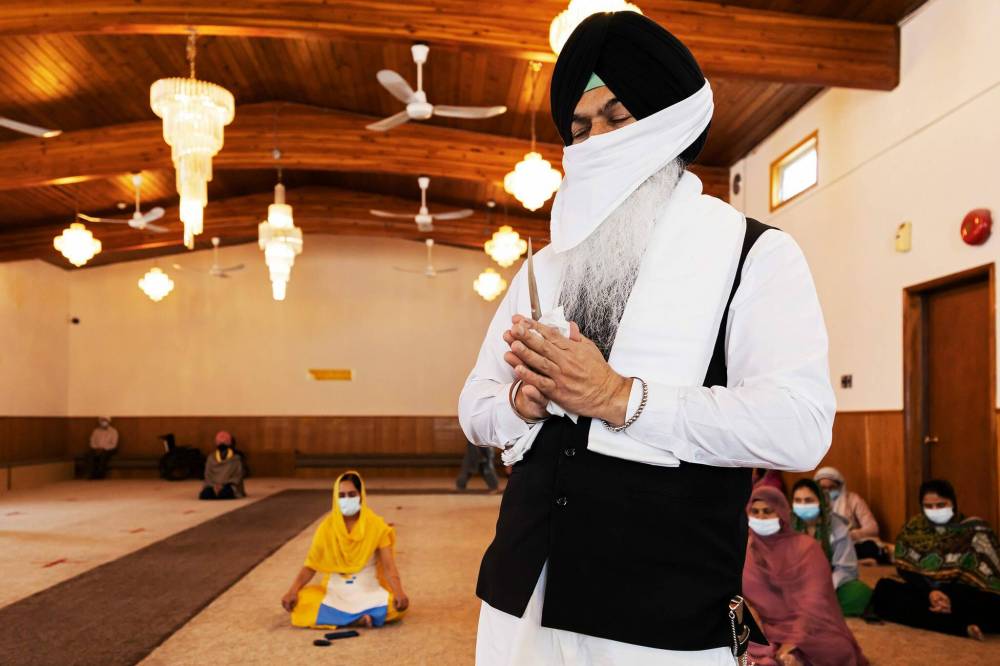
In the community kitchen of Gurdwara Singh Sahab— a place of Sikh assembly and worship on Sturgeon Road in Winnipeg — a five-course meal is prepared by a host of Sikh devotees for the weekly Sunday langar.
“In Sikhism, langar is considered selfless service to the community for everyone and anyone who is in need,” says Balwinder Kaur Dhillon, who has been worshipping at the gurdwara since 1977.
“We don’t care about religious differences. There is no discrimination between rich and poor; it doesn’t matter if you are a king or a servant,” he said.
“We sit on the same floor, cross-legged in the same line, and we all eat together.”
It takes organization and effort to prepare this mass meal. Every element of the langar comes from donations and volunteers, from the funds to buy the ingredients to the time spent cooking.

“The food changes depending on who is cooking that week or who is hosting,” Dhillon says.
“People contribute whatever they can. They buy groceries for the weekly meal or they can give donations to the gurdwara and we can purchase the food.
“Sometimes, like today, the meal can be hosted by a single person and they contribute towards the ingredients as well as the labour.”
On this Sunday, the host, Besant Kaur, made a donation in honour of her grandchild’s birthday.
But even when there is no one hosting there is always something to eat.
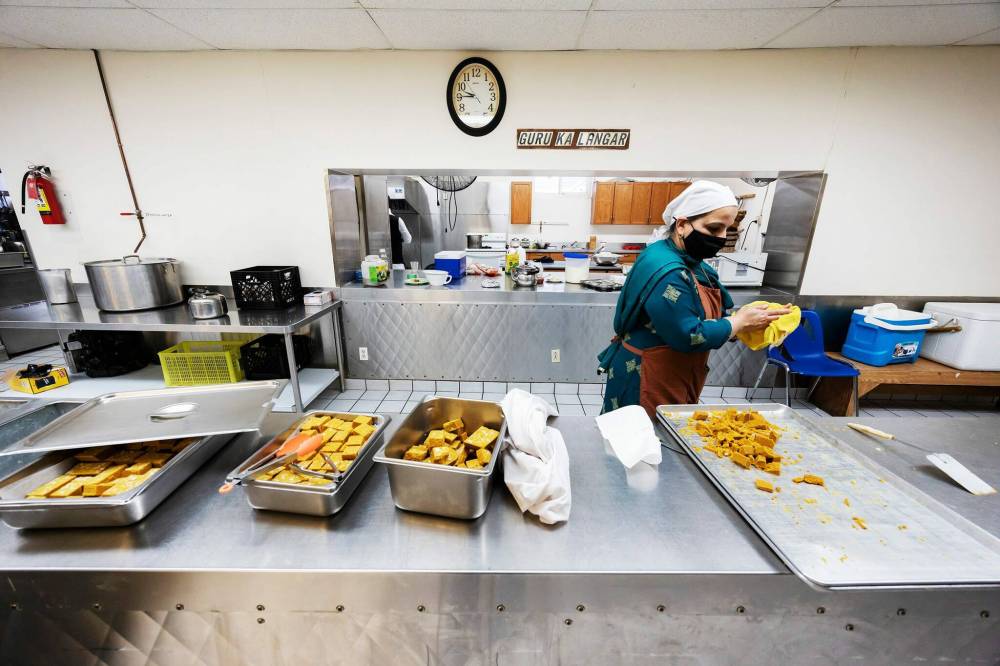
“People are always donating food, which we keep in our storage room,” Dhillon says. “We always have flour, lentils, vegetables; there is never a day when there is no food in the gurdwara.”
Preparations for langar can sometimes start the day before. On the day of the service volunteers start cooking early, before the first prayers of the day commence.
The kitchen is a hive of activity.
Virpal Kaur, who has been volunteering for more than a decade, tips out a heavy bag of rice to make sweet dessert.
Across the way another volunteer, Harjit Kaur, carefully grips a long ladle to stir nine kilograms of vegetables simmering in a giant vat.
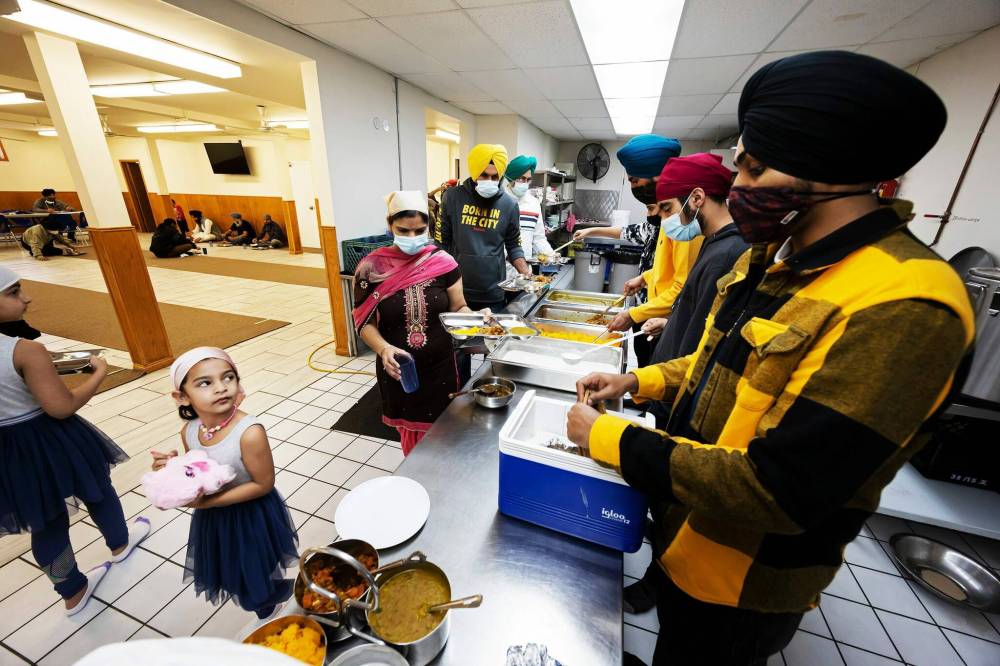
Satvir Kaur portions slices of besan barfi, a fudge-like dessert made from chickpea flour and served before the langar for whoever wants to have some.
That, with a cup of chai (Punjabi spiced tea), is a sweetener before the meal proper.
Beneath the sound of steam hissing from large pots and the crackle of roti as they are slapped down a hot griddle, there is a low deep hum.
The volunteers are chanting.
“Satnam Waheguru,” they repeat in rhythm, praising god as they continue preparing the meal comprising five dishes: aloo gajar sabzi (potatoes and carrots with cumin); daal (spiced lentils), dahi (homemade soured cream with shredded raw vegetables); roti (a flatbread made with whole-wheat flour); and meethe chawal (sweet yellow rice).
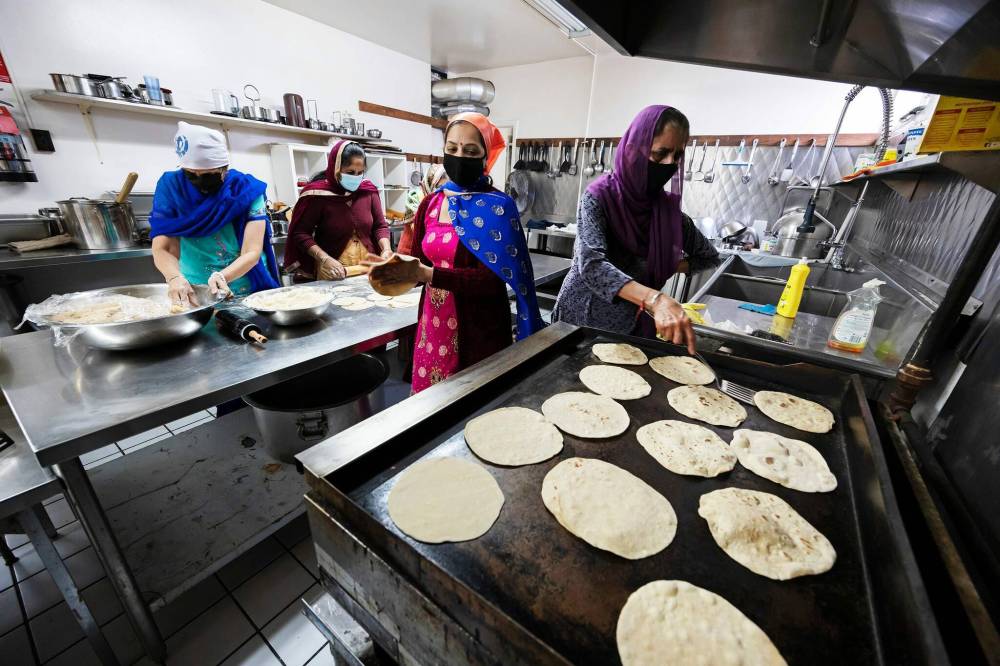
The prayer is interspersed with chatter as they catch up on their lives, socializing with each other while they tend to the dishes on the stove.
In the communal hall there is a clatter of stainless steel plates and cutlery, signalling that it is nearly time for lunch.
In pre-pandemic days people would already be seated on the floor waiting to be served, but times have changed and the protocols of langar have had to evolve.
Now, everyone lines up in front of the trays of steaming food, patiently awaiting their turn as servers dish up daal, vegetables and rice onto gleaming plates.
But before anyone can tuck in, a portion will be taken to the prayer hall to be offered to the Guru Grant Sahib, the religious scripture of Sikhism.

The food is prayed over by a volunteer, Bikram Singh, who swipes a Kirpan — the Sikh holy dagger — across it.
The practice of langar was established in Punjab in the late 15th century.
The three pillars of Sikhism are Kirat Karni (honest living), Naam Japna (focus on god) and Vand Chakna (sharing with others). Langar falls firmly into the third camp.
“There is no discrimination when you take langar. This is the way Guru Nanak (the founder of Sikhism) wanted it,” explains Balwinder Singh Gill, who is with his daughter Simran, a second-generation Canadian.
“I have been coming here since I was four,” Simran Gill says. “To me, langar upholds the principles of equality; we are all the same regardless of caste, gender or religion.”

The act of langar is not just confined to the temple.
“Sikh organizations such as Khalsa Aid have been helping others with langar throughout the pandemic, and also during the recent floods in B.C.,” Simran says.
“Gurdwaras in Winnipeg banded together during this pandemic to donate money and grocery supplies for families who needed it,” Dhillon added.
“This is called sewa. There are three sewas you can do: tan, man and dhan. All of them are to serve others (with) no hidden motive. You do not expect anything in return.
“I believe humanity is a shadow of god. And what we do is a selfless love.”

fpcity@freepress.mb.ca

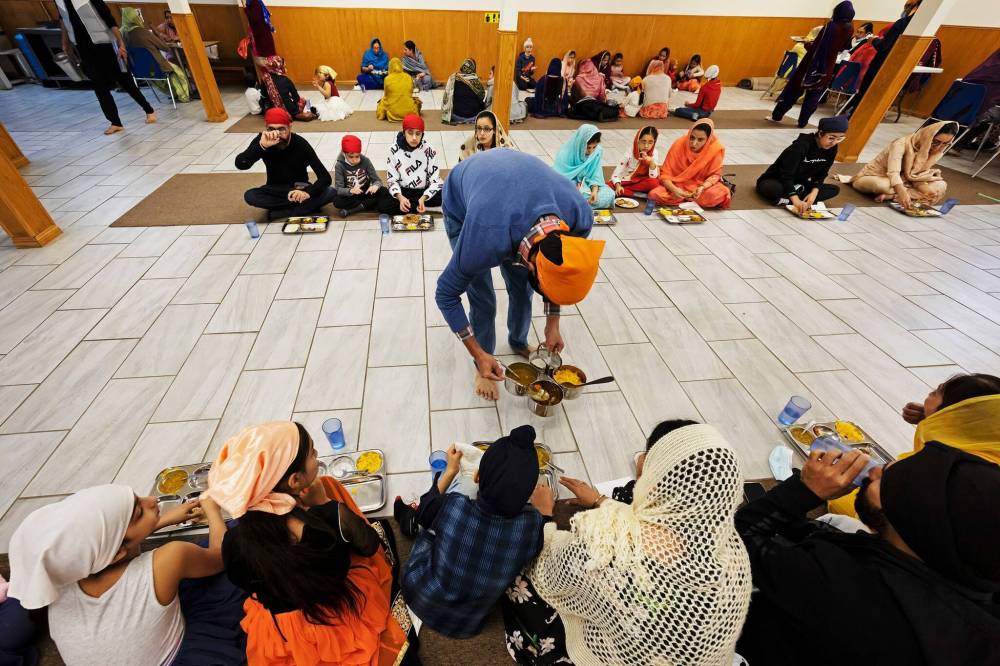

Our newsroom depends on a growing audience of readers to power our journalism. If you are not a paid reader, please consider becoming a subscriber.
Our newsroom depends on its audience of readers to power our journalism. Thank you for your support.




